
Opinion
Kitchen appliances with touch controls drive me crazy
by Simon Balissat

The desert city of Dubai in the UAE is the host of Expo 2020. I put my holiday in the Gulf on hold to check out the World Expo and chronicle what impressed me most.
Sustainability and mobility are two topics I’m very interested in. They’re also areas I still have lots to learn about. Even while I was on holiday in Dubai, these were thoughts I couldn’t get out of my head. When I read that these topics were to be the focus of the world exposition, I knew straight away that I wanted to go.
World expositions have been around since 1851. The slogan for the latest edition in Dubai is «Connecting Minds, Creating the Future», and it runs until 11 March 2022. Originally, the Expo was set for October 2020 to April 2021 but was postponed because of the coronavirus pandemic. The event marks the first World Expo in an Arab country.
The whole topic of sustainability is a bit absurd in Dubai of all places. After all, this is the place where a 438-hectare city was built from the desert with the help of seven billion francs. I marvel at the size of the car parks: one seemed like it was equal to the Canton of Uri, just less mountainous. The taxi stand is a kilometre long. From there, it leads to the entrance, which is a square-shaped, metal door as tall as a house. That’s where I unexpectedly got my first smile from an orange robot. Otherwise known as Opti, the little mascot for the Expo.
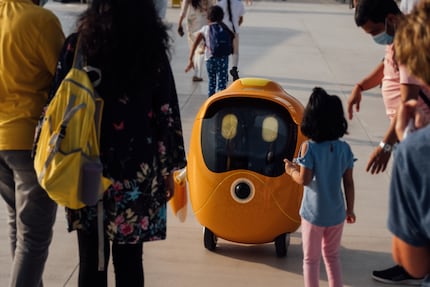
From the outside, the Dutch pavilion looks odd. It somehow looks second-hand, with surprisingly few frills. I like that, and it makes me curious. The supporting structure and fixed features are made of recycled steel. Inside, there’s a huge biotope. A wind collector stack on the roof turns desert air humidity into water within the pavilion. Marjan from Aubel Studio designed the colourful roof that’s decked out in solar panels. These are made of an organic, transparent material. Its uses are twofold. Firstly, the panels absorb the sun’s energy. As they’re semitransparent, they also let light shine through. The filtered light has the right spectrum for allowing the edible plants on the cone to grow.
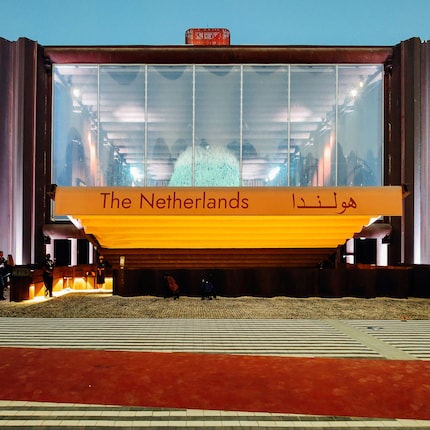
The floor tiles are made of mycelium, threadlike cells from mushrooms. Meanwhile, the chimney-esque structure helps to regulate the temperature and humidity inside the cone. This means that it’s also possible to have oyster mushrooms growing on the inner, damp side and edible plants thriving on the outer side. All in all, a well thought-out concept. I like how they’ve connected water, energy and food.
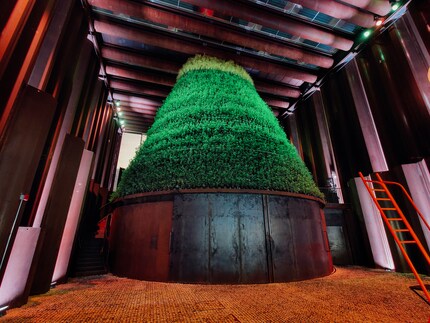
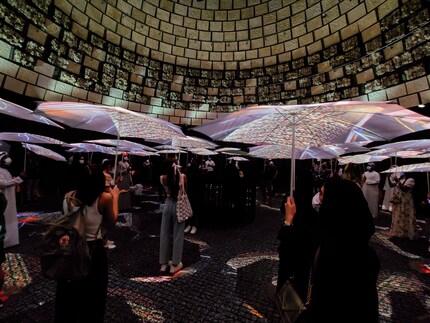
The entrance area has information about Spain’s history and achievements. Inside the pavilion, I walk down in circles around a huge piece of art that’s made of LED strips. Various energy models and visions of the future are presented in dark rooms. I also discover the Zeleros hyperloop. This is the European response to Richard Branson’s Virgin hyperloop.
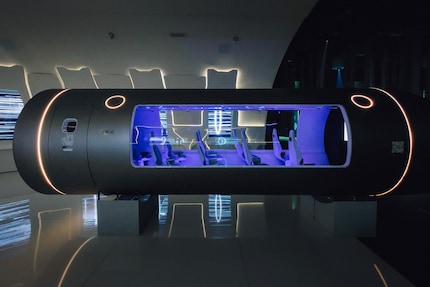
It’s the train of the future. The concept is as follows: a capsule glides through a vacuum pipe system at speeds of up to 1,000 km/hour. This kind of train is autonomous and doesn’t release any emissions. In terms of size, the capsules come in various models that fit 50 to 200 people. Active maglev trains that are electrically operated could reportedly one day travel from Madrid to Paris in 90 minutes. That’s a distance of 1,050 km as the crow flies. The EU commission has included hyperloop in its sustainability and mobility strategy. They plan to test it out with people in 2030.
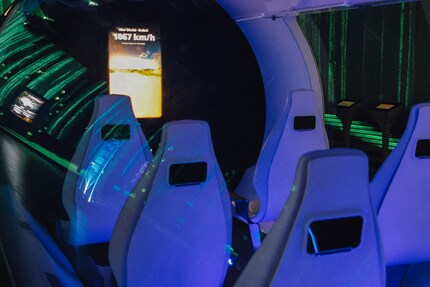
Personally, I love travelling and am fascinated by this project. I’m eager to see if the hyperloop launches in 2050 as is currently planned. Wait a minute… I’ll be 63 years old by then with a chip at the back of my head and I’ll be whinging about young people. But anyway, I’ll still want to get from one city to another in a quick and sustainable way.
Taking a back entrance, I end up in the futureHaus, designed to be the house of the future. Almost every item of furniture here can think for itself. Someone just used voice control to change the colour of the LED lights. In contrast, everything looks plain, white and impressive. The wall between the living room and the office can be moved. Meanwhile, you can turn the TV 180 degrees from the living room into the office. And the speakers are already integrated in the walls. There’s a skylight for future deliveries via drone. It goes without saying that the house comes with solar panels.
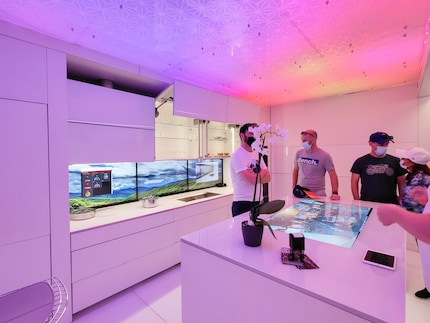
In the kitchen, my journey into the auspicious tech-centred futurecontinues. A big, white sheet of Gorilla glass acts as the stove. The sheer size of it means you could have as many as ten pots and pans on the go at once. No matter where you put them. That’s because the surface only heats up at the spot where there’s a pan. However, if I were to put my hand on it, the stove would be cold. A virtual window above it is made of displays. This lets you check recipes, watch Netflix series or access whatever you want while cooking.
In the bedroom, I stumble upon something familiar – a fold-down bed. Even in Switzerland, it seems to be something that’s back in fashion again more than ever before. The difference being that in this instance, it’s an electric folding bed with sleep sensors and built-in heating elements. There’s also a screen built into the mirror. This lets you look at clothes or get recommendations for good outfit combinations – in case you get the urge to wear something other than a hoodie.
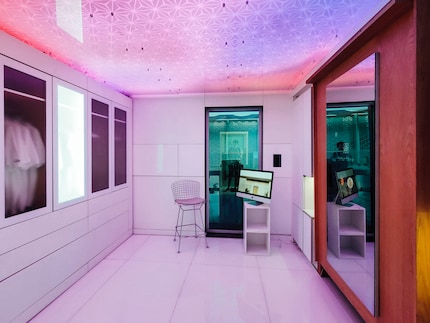
The bathroom’s got the lot. For instance, the water temperature can be controlled via hand movements. The sink recognises my height and automatically adjusts it accordingly. The same goes for the toilet. It also cleans itself and uses 90% less water. The reason being that the water from the sink and shower gets reused. There are also displays on the mirror and shower screen that offer entertainment.
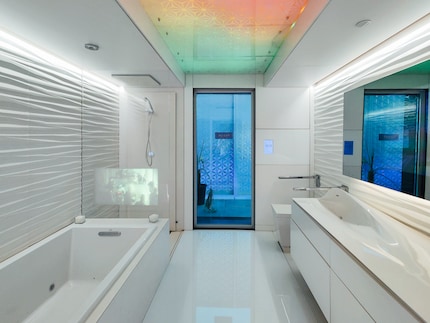
The home components, known as cartridges, are all prefabricated in a factory. The manufacturing methods are industrialised, meaning the construction on-site only takes about a week. Joe Wheeler from Virginia Tech University said in an NBC interview that a house like this would set you back 100,000 US dollars. Reasonably priced property is still in short supply – especially in Switzerland. But this is linked more to the cost of the plots rather than building costs themselves.
While strolling around, I keep catching sight of the AI Wasl dome from a distance. The darker it gets, the more spectacularly it lights up. It’s the centrepiece of the Expo and was designed by Adrian Smith and Gordon Gill. In Arabic, Al Wasl means «connection», which is fitting as the dome is the centre of the three main areas: «possibility», «mobility» and «sustainability». 252 laser projectors adorn the dome with images, videos and thousands of colours. It’s spectacular. In fact, the images that are accompanied by music are so fascinating I can hardly avert my gaze. Under the dome, there’s everything you could think of – from fountains to small parks, stages, bars and restaurants. You can find all the other pavilions here.
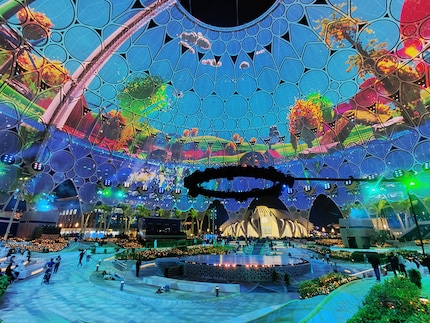
As well as this, there were lots of other fantastic moments I was able to capture during my trip to Expo 2020.
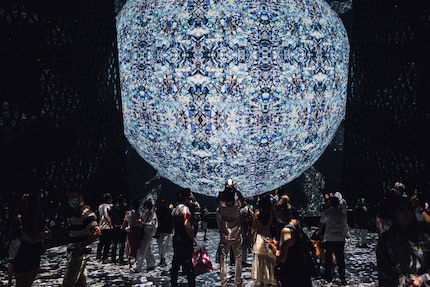
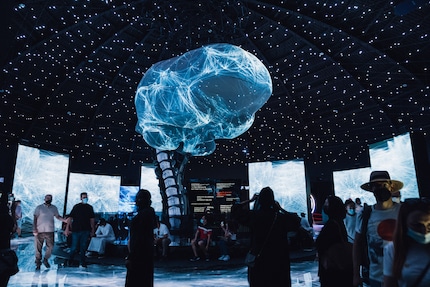
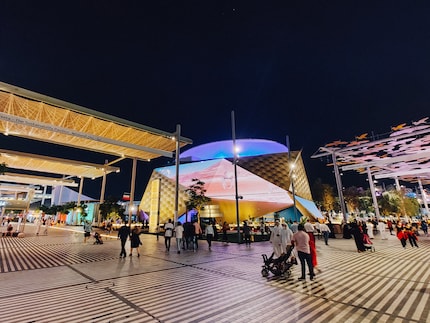
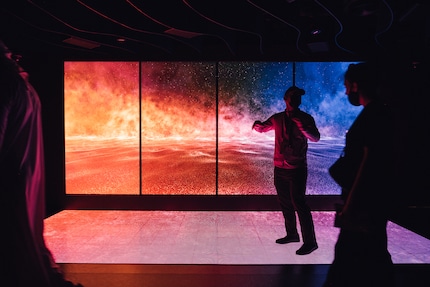
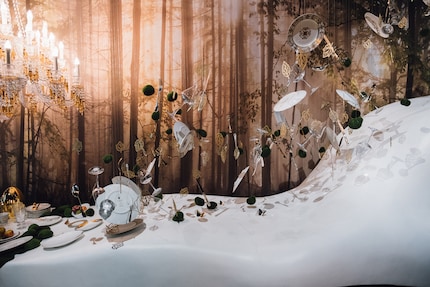
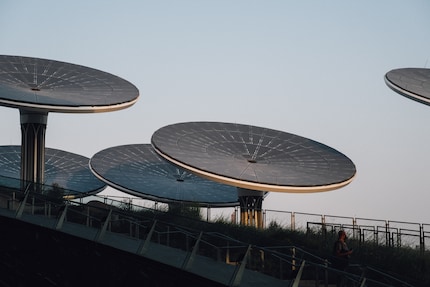
As a photographer, human being and dad, I tell stories as close to life as possible. With all its corners, emotions and uniqueness.
Interesting facts about products, behind-the-scenes looks at manufacturers and deep-dives on interesting people.
Show all